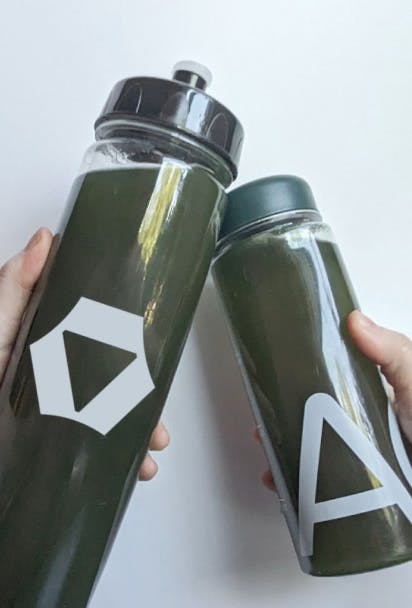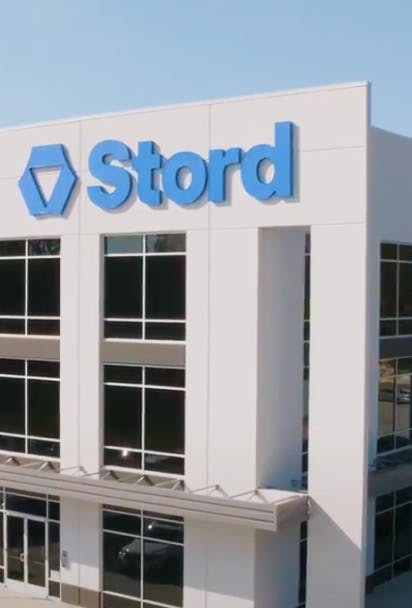Why Fulfillment Becomes a Growth Bottleneck
Every direct-to-consumer (DTC) brand begins with do-it-yourself (DIY) fulfillment. Founders pack boxes in basements, family members run shipping labels, and a single leased warehouse hums with just enough efficiency to keep up with early growth.
But as brands scale, whether through viral campaigns, subscription models, or wholesale expansion, the logistics equation changes. What once felt manageable starts to strain. Orders pile up. Labor costs creep higher. Inventory errors compound. Eventually, fulfillment shifts from being a tactical chore to a strategic growth constraint.
At this point, leaders start asking, “Have we outgrown in-house fulfillment? Should we switch to a third-party logistics (3PL)?”
The answer lies in recognizing the unmistakable signs that your brand has hit a key inflection point.
The True Cost of In-House Fulfillment
Running your own warehouse comes with benefits, such as total brand control, full visibility, and flexibility. However, these benefits are offset by hidden costs, including:
Fixed overhead: Rent, utilities, equipment, insurance, and salaries persist whether orders are high or low.
Labor inefficiency: Scaling staff up and down with demand spikes is costly and often unreliable.
Technology gaps: Building and maintaining robust WMS, OMS, and carrier integrations requires capital and expertise.
Opportunity cost: Time spent managing pick-pack-ship operations is time not spent on marketing, product development, or customer experience.
These costs often remain invisible until the brand scales. Then suddenly, fulfillment is no longer a differentiator but a distraction.
7 Signs Your DTC Brand Has Outgrown In-House Fulfillment
As your business grows, your in-house fulfillment operation may start to feel less like a competitive advantage and more like a constraint. Manual processes that once worked now lead to costly errors and delays. The time you spend managing logistics is time you can't spend on marketing, product development, or customer experience.
Here are seven signs that you've hit a point where you may need to consider outsourcing your fulfillment.
1. Order Volumes Are Outpacing Your Capacity
If your fulfillment team is constantly running at full tilt, or if overtime and temp labor have become the norm just to keep up, you’ve likely hit the ceiling of your in-house capacity.
Watch out for the following:
You’re regularly shipping more than 1,000–2,000 orders per month from a single facility.
Order backlogs are pushing delivery promises beyond customer expectations.
Inventory space is maxed out. Racks, aisles, and even office space are overflowing with product.
A 3PL can provide scalable space and staffing that flexes with your demand, eliminating the need to constantly expand your own facilities.
2. Shipping Costs Are Eroding Margins
Carrier rates and zone-based pricing are unforgiving. If all your orders originate from one location, customers on the opposite coast, or in another country, drive up costs and transit times.
Watch out for the following:
Your average cost per package is rising despite steady order sizes.
You’re eating the cost of “free shipping” offers more frequently.
Delivery times for major customer clusters are slipping past 3–5 days.
Outsourcing fulfillment with a multi-node 3PL strategy can cut both shipping costs and delivery times by placing inventory closer to end customers.
3. Inventory Accuracy Is Declining
Mis-picks, stockouts, and overselling on marketplaces are symptoms of inadequate inventory systems. Manual processes might work in the early days, but at scale, they introduce costly errors.
Watch out for the following:
More than 2–3% of orders include errors or require reshipments.
Inventory counts at month-end don’t reconcile with sales channels.
You’re running frequent emergency replenishments to correct forecasting mistakes.
A 3PL with integrated WMS/OMS systems ensures real-time inventory visibility across SKUs, sales channels, and fulfillment nodes.
4. Returns Have Become Overwhelming
Returns are especially heavy in categories like apparel and beauty, where sizing and preferences drive higher return rates. Managing reverse logistics in-house can overwhelm a small team and eat into warehouse efficiency.
Watch out for the following:
Returns are sitting unprocessed for weeks, tying up working capital.
Customer complaints about slow refunds are increasing.
Your team spends more time on returns than outbound fulfillment.
3PLs can streamline reverse logistics by integrating return portals, automating inspections, and reshelving or disposing of inventory faster.
5. Seasonal Spikes Break Your Operations
Many DTC brands thrive on peak moments: Black Friday, product drops, influencer campaigns. But these spikes can overwhelm in-house fulfillment, leading to errors, delays, and unhappy customers.
Watch out for the following:
Hiring and training seasonal staff every year is a fire drill.
Facilities run out of space during product launches.
Carrier pickups are maxed out during promotions.
3PLs already staff, train, and design operations for surge handling, allowing you to capitalize on growth moments without breaking your operation.
6. Your Leadership Team Is Distracted by Logistics
As your brand scales, leadership should focus on strategy, not whether Friday’s orders got packed. If fulfillment consumes more of your time than growth initiatives, it’s a clear signal you’ve outgrown DIY logistics.
Watch out for the following:
The COO spends more time negotiating carrier rates than optimizing supply chain strategy.
The CEO jumps in to pack boxes during peaks.
Meetings revolve around “warehouse fires” instead of growth.
Shifting to a 3PL gives leadership back time to focus on differentiation.
7. International Demand Is Rising
Fulfilling cross-border orders from a domestic warehouse can be slow, costly, and rife with customs delays.
Watch out for the following:
More than 10–15% of your web traffic comes from outside the U.S.
International customers abandon carts due to high shipping fees or long delivery windows.
You’re fielding complaints about unexpected duties and taxes on delivery.
Partnering with a 3PL that supports international fulfillment helps you expand with confidence, manage landed costs, and navigate compliance.
How to Decide if You Need a 3PL
The decision to outsource fulfillment is rarely cut-and-dry. Brands must balance growth ambitions, financial readiness, and customer experience expectations. Here’s a guide to help you decide
Step 1: Assess Current Pain Points
Are fulfillment errors eroding customer trust?
Are delivery times falling short of competitors?
Is leadership distracted by operational fires?
Step 2: Model the Financial Trade-Off
Compare in-house costs (fixed overhead + labor + tech + shipping) vs. projected 3PL costs.
Factor in shipping savings from multi-node fulfillment.
Consider opportunity costs: What could your team accomplish if fulfillment was offloaded?
Step 3: Align with Strategic Goals
Are you preparing for subscription growth that requires predictable fulfillment?
Are you expanding into wholesale or retail channels with stricter compliance requirements?
Are you exploring international markets?
If fulfillment pain points consistently limit growth opportunities, that’s a strong case for a 3PL.
When Should a DTC Brand Switch to a 3PL?
Timing is everything. Switching too soon may add unnecessary costs, and switching too late can damage customer trust.
Common Inflection Points for DTC Brands:
1,000–5,000 orders/month: Most brands at this volume struggle to balance labor, accuracy, and shipping costs in-house.
Entering new markets: Expanding into Canada or Europe requires regional fulfillment and compliance expertise.
Launching wholesale channels: Retail partners often mandate strict SLAs that in-house operations can’t consistently meet.
Scaling subscriptions: Predictable monthly orders require flawless inventory management and shipping reliability.
Switch when fulfillment is no longer a growth enabler, but a growth limiter. If you’re turning down opportunities, losing customers, or missing margins because of logistics, it’s time to move.
Practical Tips for a Smooth Transition to a 3PL
Making the move from in-house fulfillment to a 3PL partner can seem overwhelming, but a smooth transition is all about preparation. Following a clear plan can help you minimize disruption and set your new partnership up for success. Here are some practical steps to guide you through the process.
Document Your Processes: Before you even begin a conversation with a 3PL, you should create Standard Operating Procedures (SOPs) for all key workflows. This includes receiving inventory, kitting, packaging, and returns. Having these in place will accelerate the onboarding process and prevent misunderstandings.
Audit Your Tech Stack: Make sure your e-commerce platforms, inventory management systems, and CRM can integrate with the 3PL's technology. A seamless data flow between your systems and theirs is essential for real-time visibility and operational efficiency.
Set Clear KPIs: Define what success looks like for you before you transition. Establish clear key performance indicators (KPIs) like fulfillment accuracy, order speed, and shipping cost per order. This allows you to hold your new partner accountable and track the ROI of your move.
Phase the Transition: Instead of a "big bang" approach, consider a phased transition. Start by moving one product line, subscription program, or region to the 3PL to test the workflows. Once you're confident in the process, you can transition all of your inventory.
Communicate with Customers: If shipping speeds or packaging options will change during or after the transition, be transparent with your customers. Set clear expectations to avoid confusion and friction, and be ready to answer any questions they may have about the new process.
The Future of Fulfillment for Scaling DTC Brands
DTC brands today face rising customer expectations, higher logistics costs, and growing competition. In this environment, fulfillment can’t remain an afterthought. It must be treated as a growth engine.
Brands that know how to decide if you need a 3PL and act on the right signals will be positioned to:
Expand faster into new markets.
Offer competitive delivery promises.
Reinvest leadership time into product, brand, and customer experience.
Is Fulfillment Holding Your Brand Back
Recognizing the signs your DTC brand has outgrown in-house fulfillment is a critical step in scaling sustainably. Whether it’s order volume surges, rising shipping costs, inventory inaccuracies, or international demand, the decision to outsource fulfillment is ultimately about enabling growth, not just cutting costs.
Knowing when should a DTC brand switch to a 3PL comes down to one question: is your fulfillment operation holding you back, or pushing you forward?
Ready to scale? Stord can support your brand’s growth. Talk to our fulfillment strategist today.







